Search Images
Browse Content (p. 793)

Image
Cleopatra's Portraiture
Coin portraits in particular show how Cleopatra wanted to be presented. Though varied in their facial features, her portraits emphasize her position of power as Ptolemaic queen. Sculptural portrait attributed to Cleopatra (Gregorian Profane...
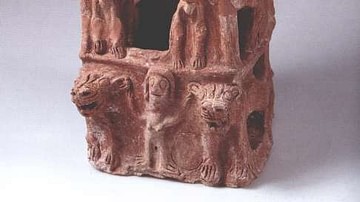
Image
Pedestal for the Figure of a Deity, Taanach
This object is pedestal for the figure of a deity. It was excavated from Taanach and dates to the Iron Age I (10th century BCE). It has a height of 53.7 cm, a width of 22 cm, and a length of 24.5 cm. (The Israel Museum, Jerusalem) ©The...
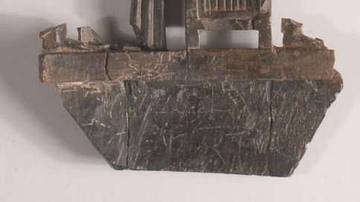
Image
Enthroned Figure Furniture Inlay, Samaria
This object is an ivory furniture inlay depicting an enthroned figure. It was excavated from Samaria and dates to the Iron Age II (9th–8th century BCE). It has a width of 5.2 cm and a length of 9 cm. (The Israel Museum, Jerusalem) ©The...
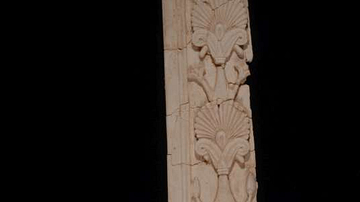
Image
Samarian Furniture Inlay with Palmettes
This object is an ivory furniture inlay depicting palmettes, ornamental palm leaves. It was excavated from Samaria and dates to the Iron Age II (9th–8th century BCE). It has a height of 17.6 cm and a length of 3.4 cm. (The Israel Museum...
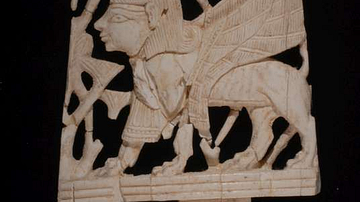
Image
Ivory Furniture Inlay with Sphinx
This object is an ivory furniture inlay depicting a striding sphinx. It was excavated from Samaria and dates to the Iron Age II (9th–8th century BCE). It has a length of 7.5 cm and a width of 7 cm. (The Israel Museum, Jerusalem) ©The Israel...
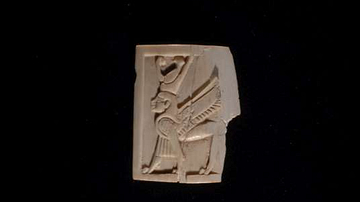
Image
Striding Sphinx Furniture Inlay
This object is an ivory furniture inlay depicting a striding sphinx. It was excavated from Samaria and dates to the Iron Age II (9th–8th century BCE). It has a length of 3.3 cm and a width of 2.6 cm. (The Israel Museum, Jerusalem) ©The...
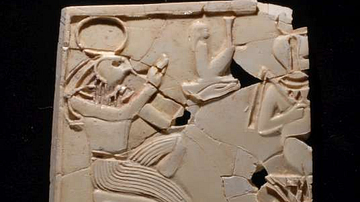
Image
Furniture Inlay Depicting Ra & Horus the Child
Furniture inlay depicting the Egyptian gods Re (Ra) and Horus the child, found in Samaria. Ivory, 9th to 8th century BCE. Israel Antiquities Authority. Copyright, republished with permission.
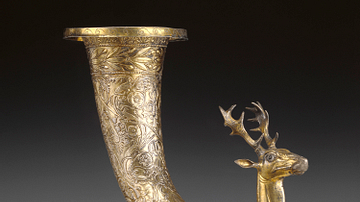
Image
Stag Rhyton
This exquisite gilded silver rhyton (wine drinking horn) terminates in the forepart of a naturalistically rendered stag. Incorporating stylistic elements of Achaemenid and Seleucid traditions, it was made in Parthia (northwestern Iran, ca...
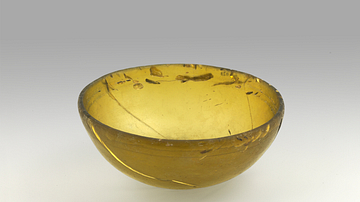
Image
Levantine Amber Glass Wine Cup
This beautiful amber-colored glass wine cup (diam. ca. 15 cm), with its fine horizontal grain on the edge, is an early example of moulded glass produce from the Levant (ca. 100 BCE - 100 CE; APM inv. no. 14.023). It had to be placed in a...
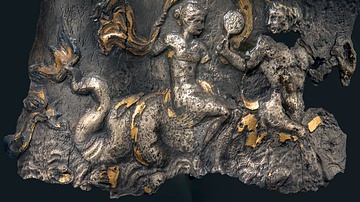
Image
A Nereid & a Sea Centaur
A fragment of a gilded silver wine jug from southern Spain (10.5 cm in height; ca. 1st cent. BCE; APM inv. no. 15.375). The image is “rolled” out to compensate for the curvature of the vase neck. The scene illustrates a Nereid riding on the...